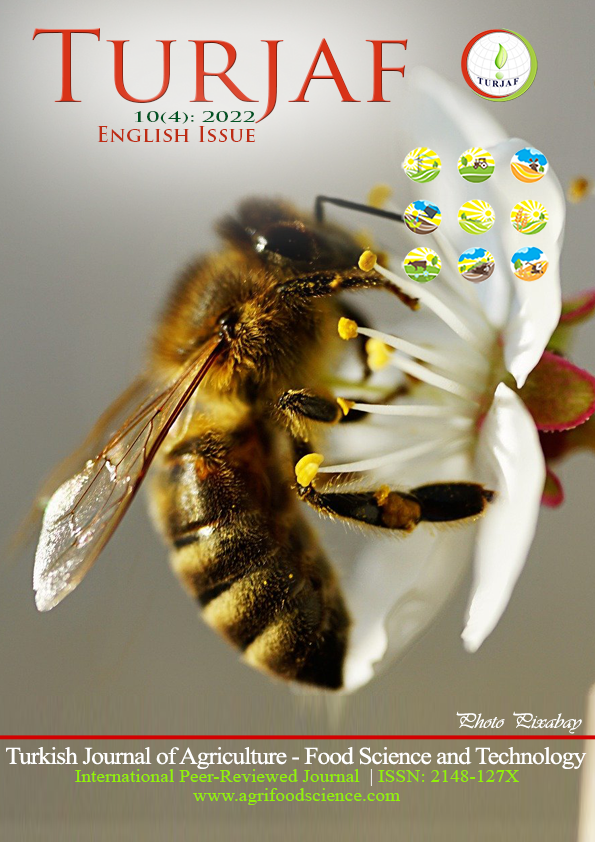Physicochemical Properties of Honey Produced at Different Altitudes
DOI:
https://doi.org/10.24925/turjaf.v10i4.710-718.4967Keywords:
Altitudes, Amino acid, Honey, Physicochemical properties, Proline,Abstract
The types and densities of honeyed plants vary depending on the altitude. This causes the amount and Physicochemical structure of honey produced in apiaries of different altitudes to change. In this study, honey harvest from the honeybee colonies placed at different altitudes in the same geographical region was carried out in the first week of September. Standard laboratory methods were used to determine some physicochemical properties of the honey samples. Some of the minimum and maximum average values obtained as a result of the analysis of honey samples; moisture 14.70% and 18.60%, free acidity 20.50 meq/kg and 25.30 meq/kg, pH 3.20 and 4.30, EC 0.22 and 0.44 mS/cm, fructose 32% to 45%, glucose 0.10% to 0.18%, sucrose from 0.66% 1.80%, maltose ranged from 0.66% to 1.80%. Also, HMF ranged from 1.80 mg/kg to 3.50 mg/kg, proline 530.00 mg/kg and 710.00 mg/kg, Density from 1.44 g/cm3 to 1.49 g/cm3, Invertase 20.30 U/kg-28.50 U/kg, Diastase activity 13.23-19.07 and Total phenolic content ranged from 76.00-94.00 g. It has been determined that the physicochemical structures of honey produced at different heights are statistically different from each other. This study aims to determine the effect of altitude difference on the quantity and physicochemical structure of honey.Downloads
Published
30.04.2022
How to Cite
Erdoğan, Y., & Turan, M. (2022). Physicochemical Properties of Honey Produced at Different Altitudes. Turkish Journal of Agriculture - Food Science and Technology, 10(4), 710–718. https://doi.org/10.24925/turjaf.v10i4.710-718.4967
Issue
Section
Research Paper
License
This work is licensed under a Creative Commons Attribution-NonCommercial 4.0 International License.









